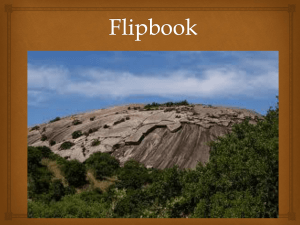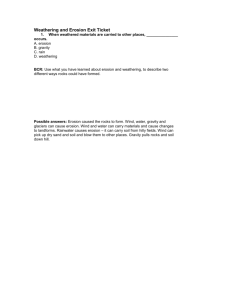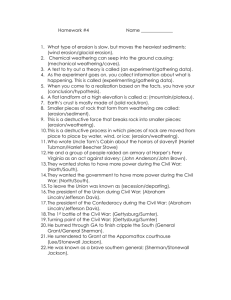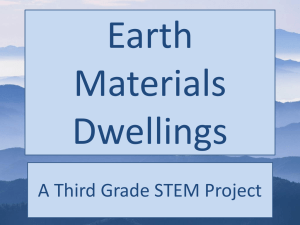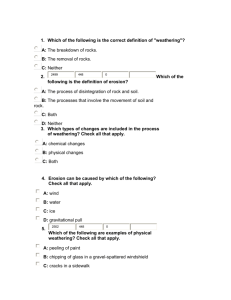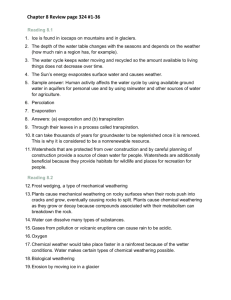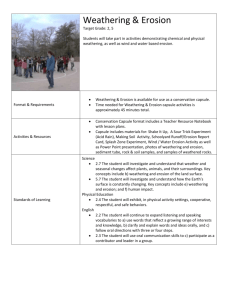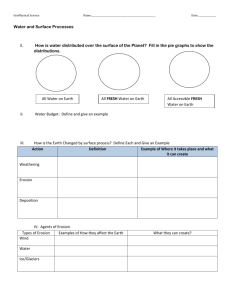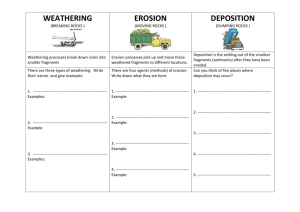Weathering and Erosion
advertisement
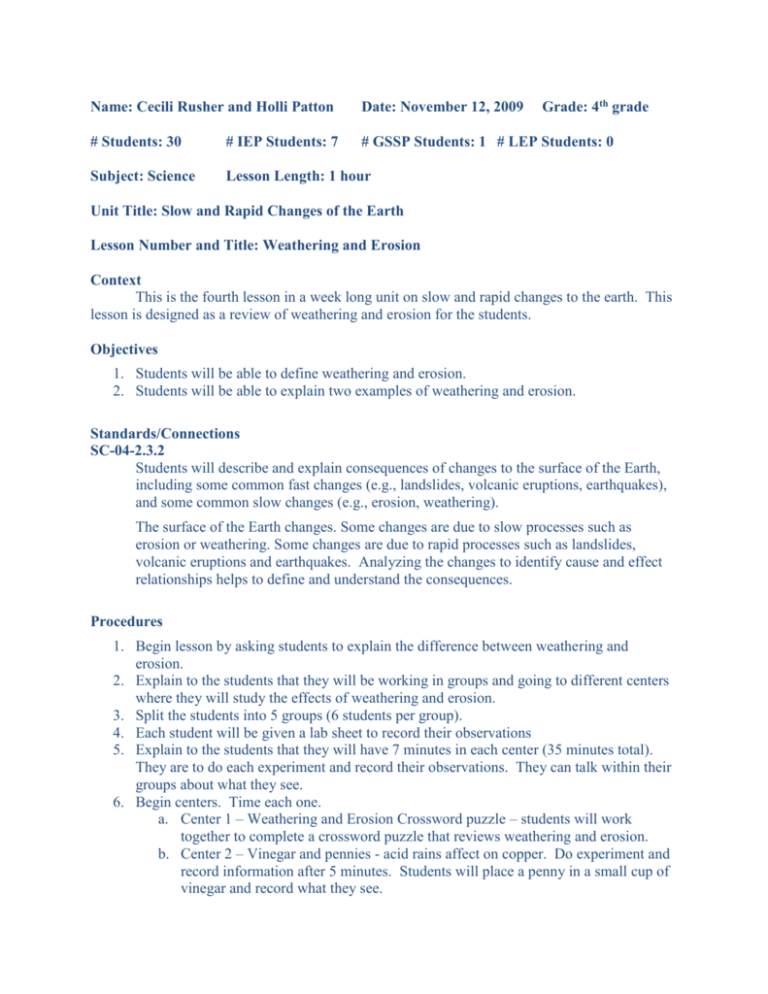
Grade: 4th grade Name: Cecili Rusher and Holli Patton Date: November 12, 2009 # Students: 30 # IEP Students: 7 # GSSP Students: 1 # LEP Students: 0 Subject: Science Lesson Length: 1 hour Unit Title: Slow and Rapid Changes of the Earth Lesson Number and Title: Weathering and Erosion Context This is the fourth lesson in a week long unit on slow and rapid changes to the earth. This lesson is designed as a review of weathering and erosion for the students. Objectives 1. Students will be able to define weathering and erosion. 2. Students will be able to explain two examples of weathering and erosion. Standards/Connections SC-04-2.3.2 Students will describe and explain consequences of changes to the surface of the Earth, including some common fast changes (e.g., landslides, volcanic eruptions, earthquakes), and some common slow changes (e.g., erosion, weathering). The surface of the Earth changes. Some changes are due to slow processes such as erosion or weathering. Some changes are due to rapid processes such as landslides, volcanic eruptions and earthquakes. Analyzing the changes to identify cause and effect relationships helps to define and understand the consequences. Procedures 1. Begin lesson by asking students to explain the difference between weathering and erosion. 2. Explain to the students that they will be working in groups and going to different centers where they will study the effects of weathering and erosion. 3. Split the students into 5 groups (6 students per group). 4. Each student will be given a lab sheet to record their observations 5. Explain to the students that they will have 7 minutes in each center (35 minutes total). They are to do each experiment and record their observations. They can talk within their groups about what they see. 6. Begin centers. Time each one. a. Center 1 – Weathering and Erosion Crossword puzzle – students will work together to complete a crossword puzzle that reviews weathering and erosion. b. Center 2 – Vinegar and pennies - acid rains affect on copper. Do experiment and record information after 5 minutes. Students will place a penny in a small cup of vinegar and record what they see. c. Center 3 – Vinegar, water, and chalk – students will place a piece of chalk in vinegar and one in water and record what they see. d. Center 4 – Beach erosion – sand and water in pie pan. The students will simulate a beach and record observations. e. Center 5 – Glaciers – frozen ice cubes with sand and dirt in them. Students will learn about erosion with glaciers by taking the frozen ice cubes and rubbing them against different surfaces. 7. As students are working in their groups walk around and help those having difficulty. Also pose questions to the students to get them thinking about the activity. 8. After all students have done each center. Bring the class back together and discuss the activities. 9. Make sure students understand that weathering and erosion take time they do not occur in second like earthquakes, volcanoes, and landslides. Assessment Objective Type of Assessment Assessment Number (formative/summative) Title/Description Obj. 2 Formative Centers 2-5 Depth of Knowledge DOK 2 Obj. 1 Formative Center 1 DOK 2 Obj. 2 Summative Lab Sheets DOK 3 Materials Vinegar Water 15 goggles Aluminum pie pan 4 bags of Sand Dirt Ice cube trays 30 pennies Plastic cups 2 boxes white chalk Paper towels Adaptations and/or Accommodations Students will work in groups and get feedback from their peers. Students will work together Students will work together as a group and explain what they saw.
